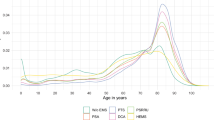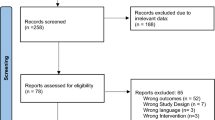Abstract
As Emergency Departments (EDs) become increasingly crowded, the non-urgent use of EDs exacerbates this problem. Uninsured patients have the highest percentage of non-urgent ED visits and free healthcare clinics provide access to care for the uninsured. This study analyzed the patient population of the 12th Street Health and Wellness Center (HWC), a student-run free clinic (SRFC), to understand the impact of SRFCs in urgent care. 2024 return and new patient intake forms from the HWC were analyzed. Multivariable logistic regression was performed to see which factors from the patient intake forms increase the probability that a patient came will into the clinic for urgent care. About 10% of the HWC patient population uses the clinic for emergencies, of which, 94% of them were not referred to the ED. If the HWC was not available, most of these uninsured individuals would have gone to an ED and incurred an estimated total cost of $39,515.80 in 2019. Multivariable logistic regression indicated that patients that came via walk-in are significantly more likely to seek urgent care at the clinic. Further, patients without insurance and patients who need a Spanish interpreter have a higher tendency to seek urgent care at this clinic. SRFCs save their surrounding EDs thousands of dollars in non-urgent ED visits. SRFCs should be attentive to patients who come in without an appointment, without insurance, and who need a Spanish interpreter because they are more likely to come in for an emergency.
Similar content being viewed by others
Abbreviations
- EDs:
-
Emergency departments
- SRFCs:
-
Student-run free clinics
- HWC:
-
Health and Wellness Center
- UAMS:
-
University of Arkansas for Medical Sciences
References
Ernst, A. A. (2019). Commentary on a hospitalist-led team to manage patient boarding in the emergency department: Impact on Hospital length of stay and cost. Southern Medical Journal, 112(12), 604.
Galarraga, J. E., & Pines, J. M. (2016). Costs of ED episodes of care in the United States. American Journal of Emergency Medicine, 34(3), 357–365.
Jaffe, T. A., Kocher, K. E., & Ghaferi, A. A. (2018). Potentially avoidable emergency department use: When policy expects patients to be physicians. Annals of Emergency Medicine, 72(3), 256–258.
Mortensen, K. (2010). Copayments did not reduce medicaid enrollees' nonemergency use of emergency departments. Health Affairs (Millwood), 29(9), 1643–1650.
Raven, M. C., Lowe, R. A., Maselli, J., & Hsia, R. Y. (2013). Comparison of presenting complaint vs discharge diagnosis for identifying nonemergency emergency department visits. JAMA, 309(11), 1145–1153.
Moe, J., Kirkland, S. W., Rawe, E., et al. (2017). Effectiveness of interventions to decrease emergency department visits by adult frequent users: A systematic review. Academic Emergency Medicine, 24(1), 40–52.
Lacalle, E., & Rabin, E. (2010). Frequent users of emergency departments: The myths, the data, and the policy implications. Annals of Emergency Medicine, 56(1), 42–48.
National Hospital Ambulatory Medical Care Survey. (2016). Emergency Department Summary Tables. Washington D.C.: US Department of Health and Human Services. Retrieved July 8, 2019, from https://www.cdc.gov/nchs/data/nhamcs/web_tables/2016_ed_web_tables.pdf.
Status of State Medicaid Expansion Decisions: Interactive Map. (2020). San Francisco, CA: Kaiser Family Foundation. Retrieved January 17, 2020, from https://www.kff.org/medicaid/issue-brief/status-of-state-medicaid-expansion-decisions-interactive-map/.
Desmond, B. S., Laux, M. A., Levin, C. C., Huang, J., & Williams, B. C. (2016). Reasons why individuals remain uninsured under the affordable care act: Experiences of patients at a student-run free clinic in Michigan, a medicaid expansion state. Journal of Community Health, 41(2), 417–423.
Understanding the Uninsured Now. (2015) Princeton, NJ: Robert Wood Johnson Family Foundation. Retrieved January 17, 2020, from https://www.rwjf.org/en/library/research/2015/06/understanding-the-uninsured-now.html.
Mcgeehan, M., Demaria, R., Charney, P., & Batavia, A. S. (2017). Insurance enrollment at a student-run free clinic after the patient protection and affordable care act. Journal of Community Health, 42(4), 785–790.
Kamimura, A., Tabler, J., Chernenko, A., et al. (2016). Why uninsured free clinic patients don't apply for affordable care act health insurance in a non-expanding medicaid state. Journal of Community Health, 41(1), 119–126.
Scott, S. A., & Judith, L. A. (2007). Medical student-run health clinics: Important contributors to patient care and medical education. Journal of General Internal Medicine, 22(3), 352–356.
Cadzow, R. B., Servoss, T. J., & Fox, C. H. (2007). The health status of patients of a student-run free medical clinic in inner-city Buffalo, NY. Journal of the American Board of Family Medicine, 20(6), 572–580.
Trumbo, S. P., Schuering, K. M., Kallos, J. A., et al. (2018). The effect of a student-run free clinic on hospital utilization. Journal of Health Care for The Poor and Underserved, 29(2), 701–710.
Capp, R., Misky, G. J., Lindrooth, R. C., et al. (2017). Coordination program reduced acute care use and increased primary care visits among frequent emergency care users. Health Affairs (Millwood)., 36(10), 1705–1711.
Sperandei, S. (2014). Understanding logistic regression analysis. Biochemia Medica (Zagreb)., 24(1), 12–18.
Nick, T. G., & Campbell, K. M. (2007). Logistic regression. Methods in Molecular Biology, 404, 273–301.
ER facility prices grew in tandem with faster-growing charges from 2009–2016. (2018). Washington, D.C.: Health Care Cost Institute. Retrieved February 15, 2020, from https://healthcostinstitute.org/emergency-room/er-facility-prices-charges-2009-2016.
Ortega, A. N., Mckenna, R. M., Kemmick Pintor, J., et al. (2018). Health care access and physical and behavioral health among undocumented latinos in California. Medical Care, 56(11), 919–926.
Rodriguez, R. M., Torres, J. R., Sun, J., et al. (2019). Declared impact of the US President's statements and campaign statements on Latino populations' perceptions of safety and emergency care access. PLoS ONE, 14(10), e0222837.
Maldonado, C. Z., Rodriguez, R. M., Torres, J. R., Flores, Y. S., & Lovato, L. M. (2013). Fear of discovery among Latino immigrants presenting to the emergency department. Academic Emergency Medicine, 20(2), 155–161.
Zibulewsky, J. (2001). The Emergency Medical Treatment and Active Labor Act (EMTALA): What it is and what it means for physicians. In Baylor University Medical Center Proceedings (Vol. 14, Issue 4, pp. 339-346
Hospital Statistics. (2019). Little Rock, AR: Arkansas Hospital Association. Retrieved October 18, 2019, from https://arkhospitals.org/archive/arkhospmagpdf/2019Stats/2019StatisticalInfo.pdf.
Uncompensated Hospital Care Cost Fact Sheet. (2017). Chicago, IL: American Hospital Association. Retrieved February 15, 2020, from https://www.aha.org/system/files/2018-01/2017-uncompensated-care-factsheet.pdf.
Author information
Authors and Affiliations
Corresponding author
Ethics declarations
Conflict of interest
Iad Alhallak, D. Keith Williams, Ruth Eudy, Erin Puryear, Melissa Clark declare that they have no conflict of interest.
Additional information
Publisher's Note
Springer Nature remains neutral with regard to jurisdictional claims in published maps and institutional affiliations.
Rights and permissions
About this article
Cite this article
Alhallak, I., Williams, D.K., Eudy, R. et al. Impact of Student-Run Free Clinics in Urgent Care. J Community Health 46, 522–526 (2021). https://doi.org/10.1007/s10900-020-00890-0
Published:
Issue Date:
DOI: https://doi.org/10.1007/s10900-020-00890-0




